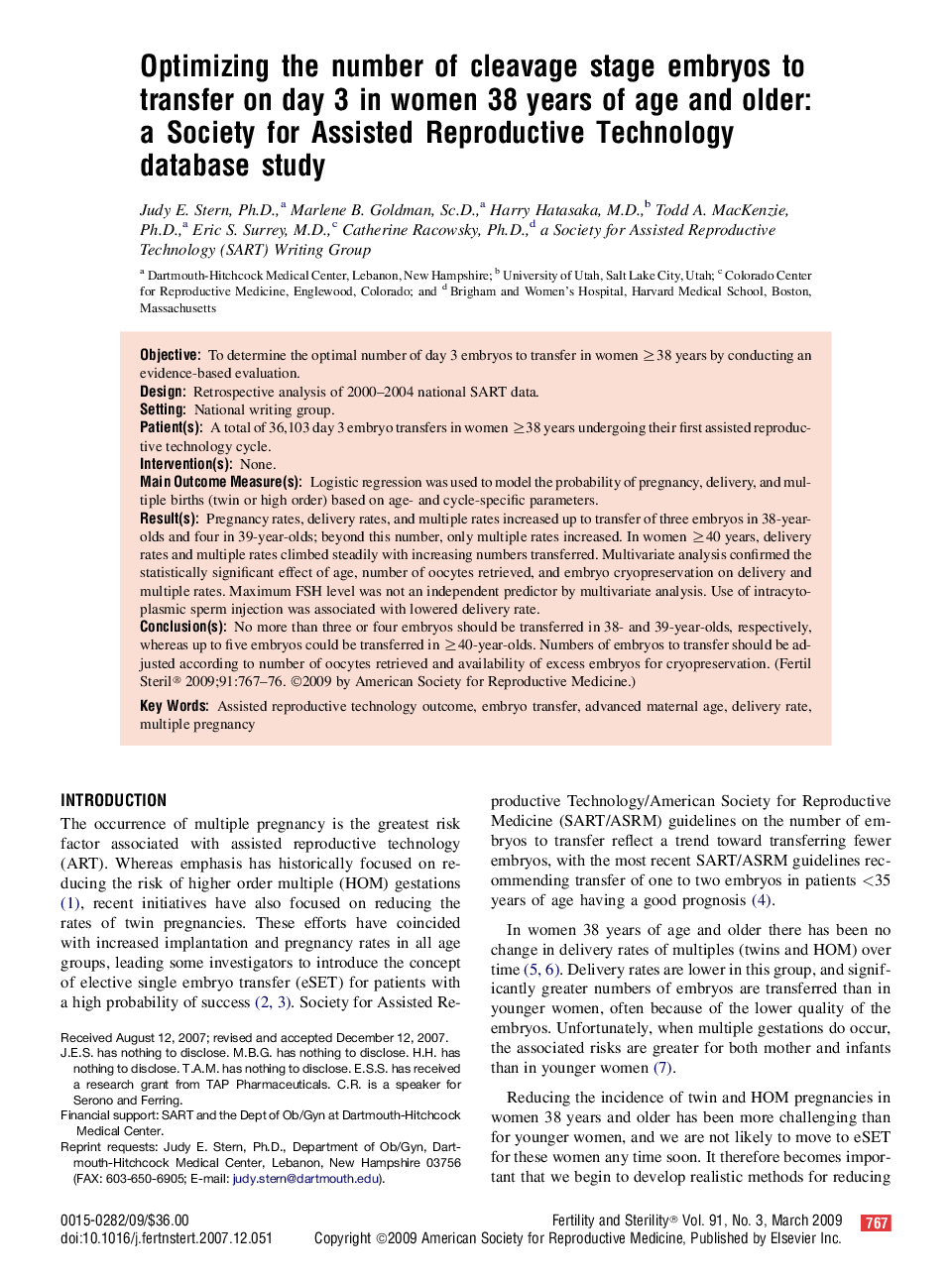| Article ID | Journal | Published Year | Pages | File Type |
|---|---|---|---|---|
| 3936960 | Fertility and Sterility | 2009 | 10 Pages |
ObjectiveTo determine the optimal number of day 3 embryos to transfer in women ≥38 years by conducting an evidence-based evaluation.DesignRetrospective analysis of 2000–2004 national SART data.SettingNational writing group.Patient(s)A total of 36,103 day 3 embryo transfers in women ≥38 years undergoing their first assisted reproductive technology cycle.Intervention(s)None.Main Outcome Measure(s)Logistic regression was used to model the probability of pregnancy, delivery, and multiple births (twin or high order) based on age- and cycle-specific parameters.Result(s)Pregnancy rates, delivery rates, and multiple rates increased up to transfer of three embryos in 38-year-olds and four in 39-year-olds; beyond this number, only multiple rates increased. In women ≥40 years, delivery rates and multiple rates climbed steadily with increasing numbers transferred. Multivariate analysis confirmed the statistically significant effect of age, number of oocytes retrieved, and embryo cryopreservation on delivery and multiple rates. Maximum FSH level was not an independent predictor by multivariate analysis. Use of intracytoplasmic sperm injection was associated with lowered delivery rate.Conclusion(s)No more than three or four embryos should be transferred in 38- and 39-year-olds, respectively, whereas up to five embryos could be transferred in ≥40-year-olds. Numbers of embryos to transfer should be adjusted according to number of oocytes retrieved and availability of excess embryos for cryopreservation.
